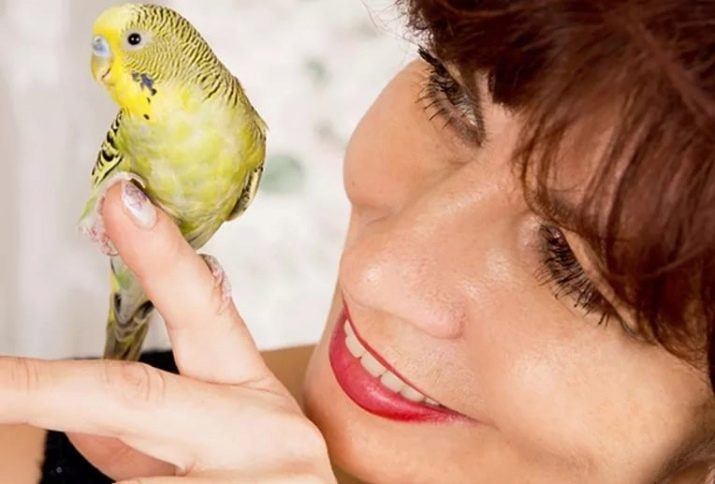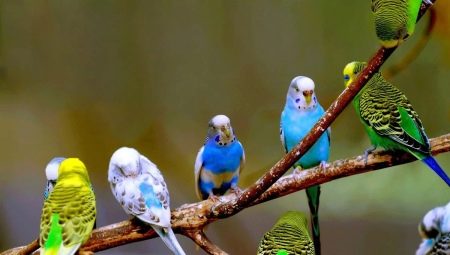The budgerigar is very popular as a pet. The bird is quite smart and active, capable of memorizing phrases. Bright and beautiful color, as well as unpretentiousness in care become the reason for the acquisition of these particular parrots.
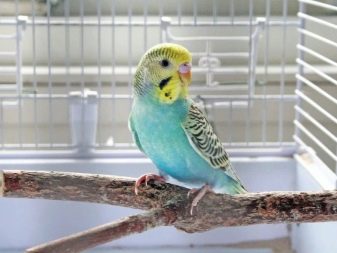
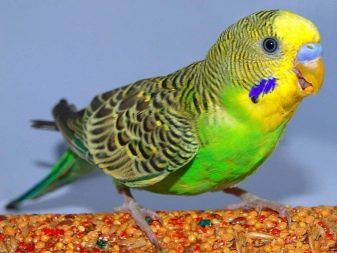
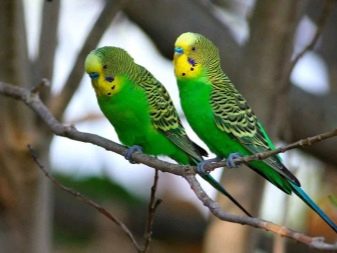
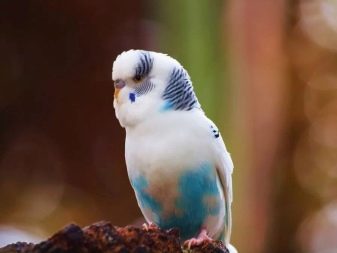
Description
At home in Australia, budgerigars live in eucalyptus thickets, forests and savannahs. Flocks consist of a different number of birds, but they all move very synchronously, as if as a whole. Wild individuals are predominantly green. They are quite hardy, adapt to different climatic conditions. The body sizes of the wavy are from 17 to 23 cm, the wing is about 10 cm, the tail is stepped, 8-10 cm long.
Birds weigh 40–45 grams. The head and neck are yellowish in front, on the left and right on the head near the throat are two elongated spots with a dark purple tint, under them there are tiny black blotches on the neck. Behind the head is covered with wavy stripes of dark color. The same are on the back, because of which the birds got their name. In the wild, budgies have bright green plumage, birds that live in artificial conditions have a much larger color gamut.
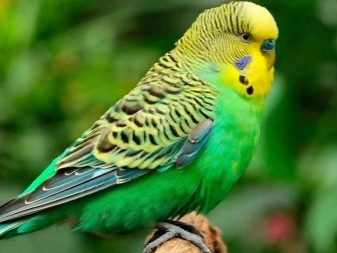
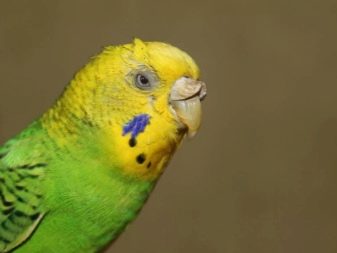
They can be of various bright colors - from white to blue - as well as different shades. The boys on their forehead have a luminous plumage that looks like a hat. A person can see it only in the dark, while parrots see it day and night. In the mating season, its brightness helps to choose a partner. The birds have dark eyes, their viewing angle is very wide. Moreover, budgies have the ability to recognize colors.
The beak is slightly curved, rather strong, keratinized. In its upper part there is a wax - a growth with sinuses - which also takes part in the movement of the supraclavius. Its color stands out significantly: young males have a purple thickening, as it grows, it acquires a saturated blue color. Females at a young age have a bright blue wax, around the nostrils there is a rim of a lighter tone. In adult girls, the growth becomes brown.
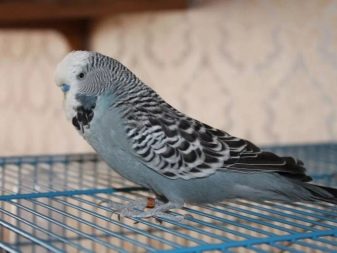

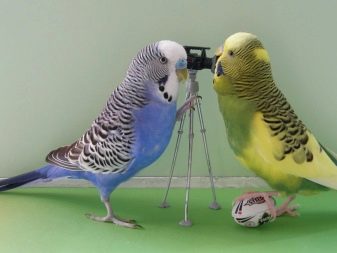
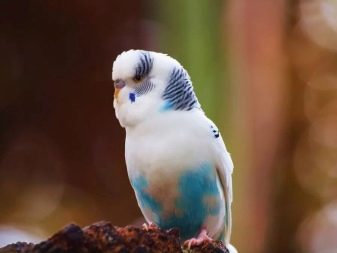
The seal is not covered with feathers, therefore, you can easily see any changes that indicate the health status of the pet. The tongue is slightly rounded, short, keratinized at the end. Feet without feather coating, blue-gray or pinkish color with almost black claws. Each paw has four fingers: two turned forward and two backward.
This arrangement is very suitable for grasping techniques, clinging to branches or bars of the cage, as well as for walking on the surface. With the help of tenacious fingers, birds easily move any small objects.
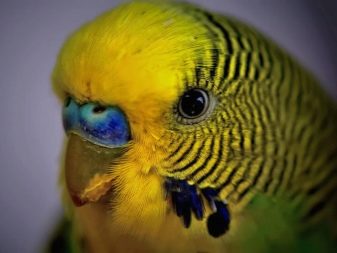
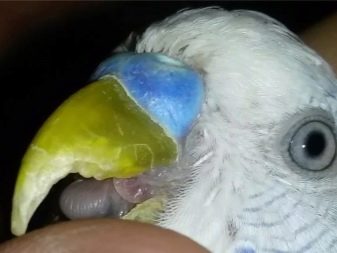
Colors
There are almost 150 species of captive wavy. Classify them according to color. The first group includes parrots, which have two primary colors, but they can be in different shades. The second combines individuals with a motley color. Separately isolated crested and cheeky representatives of budgies.
Green has a natural color. On the back, uniform wavy stripes, head and wings are also covered with typical black lines. There are six characteristic spots on the neck.
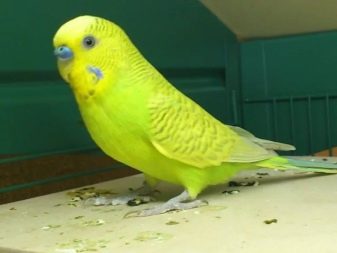
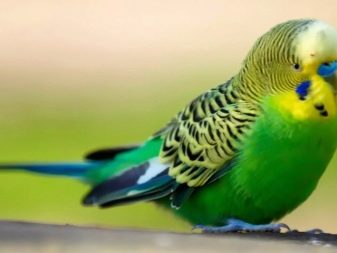
Opaline in color, it does not have bright, clear stripes, dashes on the wings of a dark tone: dark gray or black.
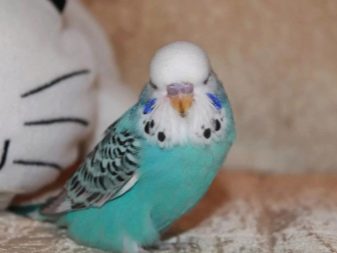
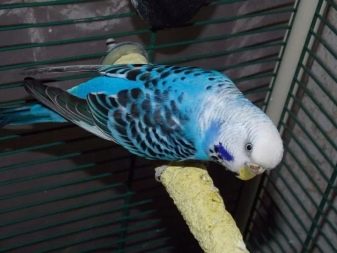
Cinnamon the color is similar to the previous one, but instead of dark stripes - brown. Females have the plumage of a lighter tone, thanks to this feature, you can easily determine the sex of the parrot.
Chicks immediately after birth have an unusual eye color - plum, as they grow older, it changes to the usual, black.
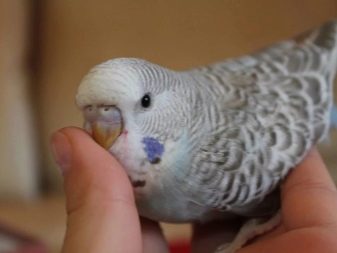
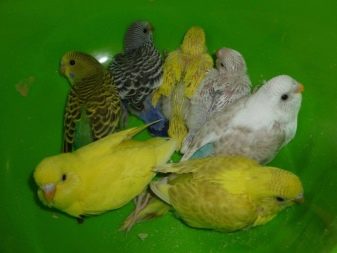
- Spangle or star color characterized by white plumage with lace patterns on the tail and wings. Framing in the form of dark stripes.
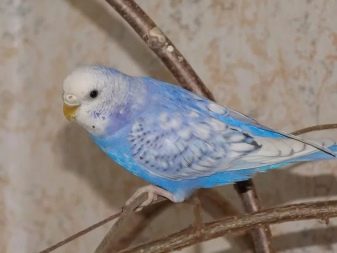

Yellow-faced different yellow head, sometimes the whole body of this color.
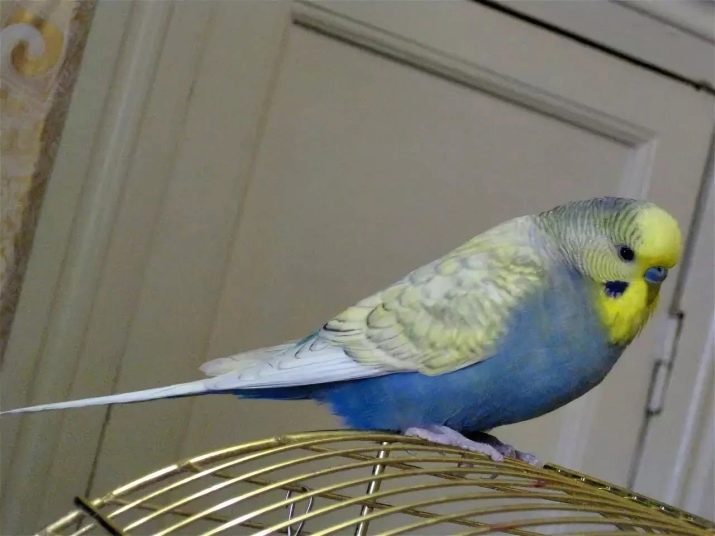
- Gray-winged characterized by a gray color of the wings, the remaining parts can be of different colors.
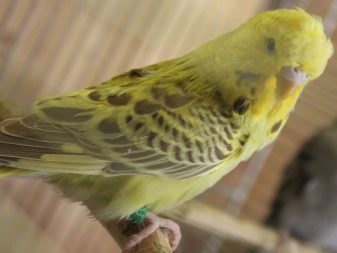
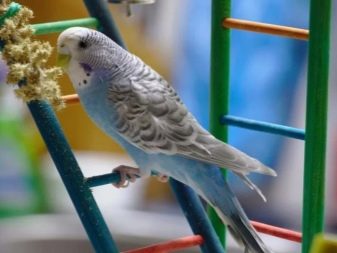
- Thoroughbreds have monochromatic wings. With the main green color they are yellow, if the bird is blue-blue - the wings are white.

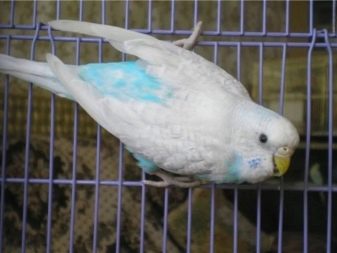
- Motley - the most numerical category. Its representatives are distinguished by the presence of clearly visible spots of various forms. The number of points can be different, often there is only one on the back of the head.
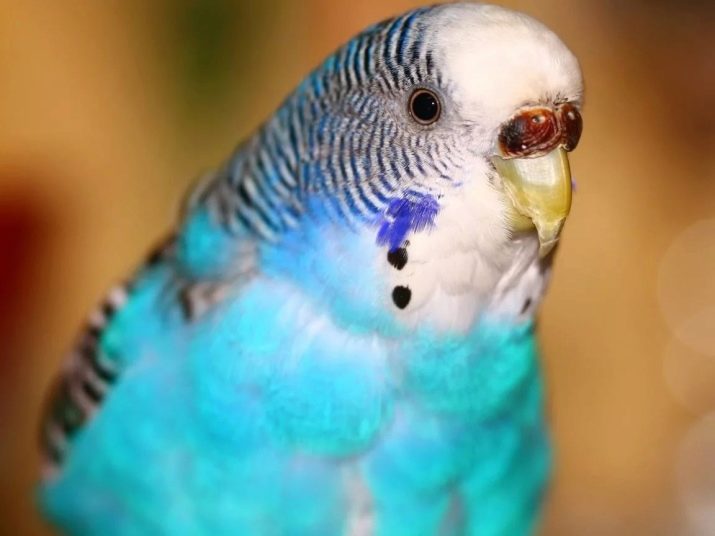
- Half the coloring is very rare, the trunk is vertically divided into two different colors. Chicks of this color are born from mating parrots of different colors, this color is not inherited.
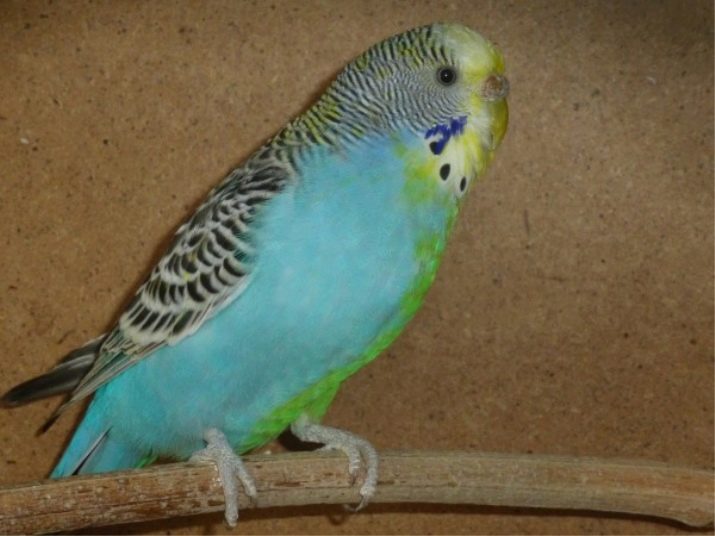
- Albino are obtained by crossing spangles with each other. Birds are completely white, differ from albinos with black eyes.
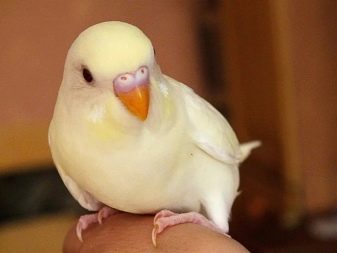
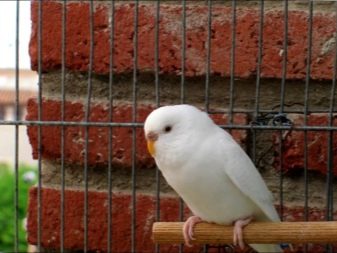
- Lutino stand out with a completely yellow color.
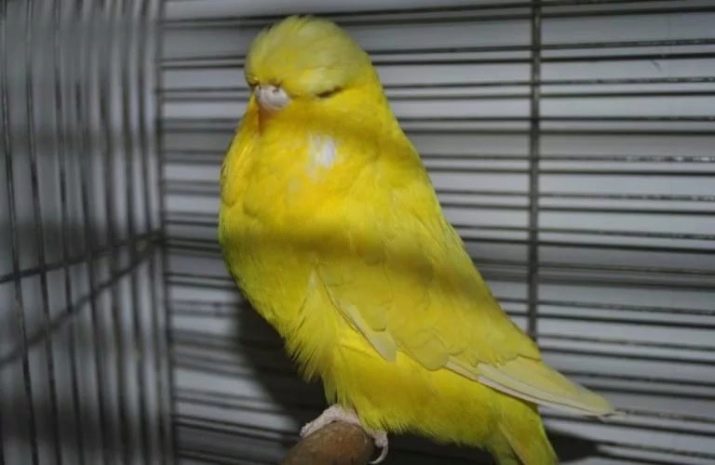
- Anthracite beautiful black coloring is characteristic.
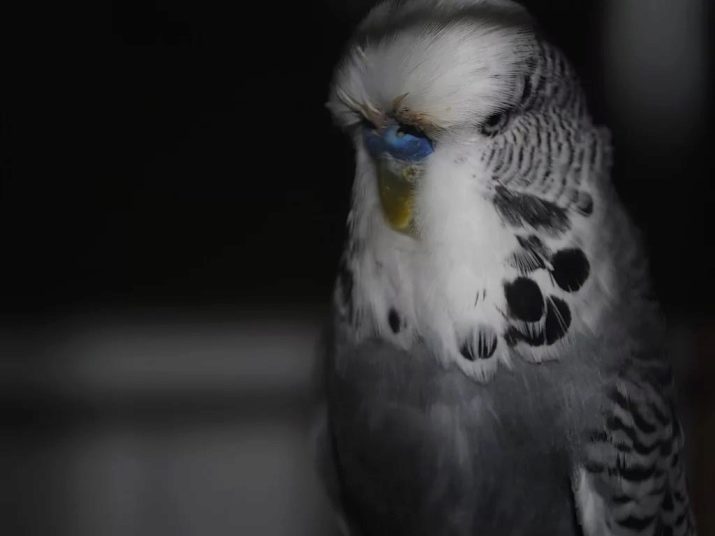
- Side have a pale gray color as the main and different shades of blue.

- Speckled they acquire their colorful color with age; it differs in a beautiful speckled pattern.

- Misty they have a turquoise body color, their head is white, and their wings are decorated with brownish waves.
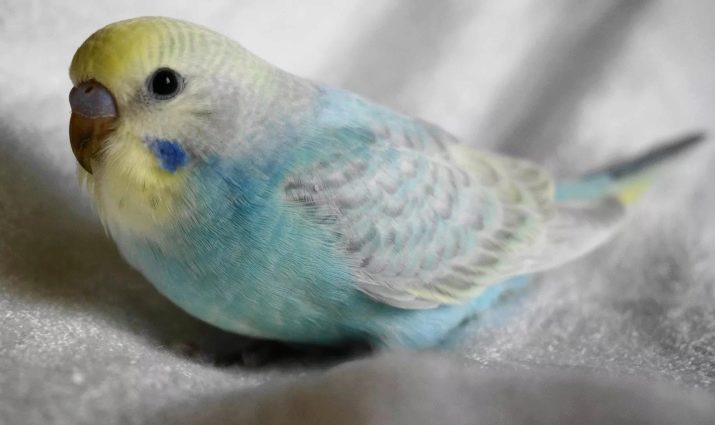
Crested come in different colors. Their distinguishing feature is the presence of a crest on the head. Its shape can be different: round, semicircular, resembling a bunch. Some representatives have chaotic locks on the back and wings.
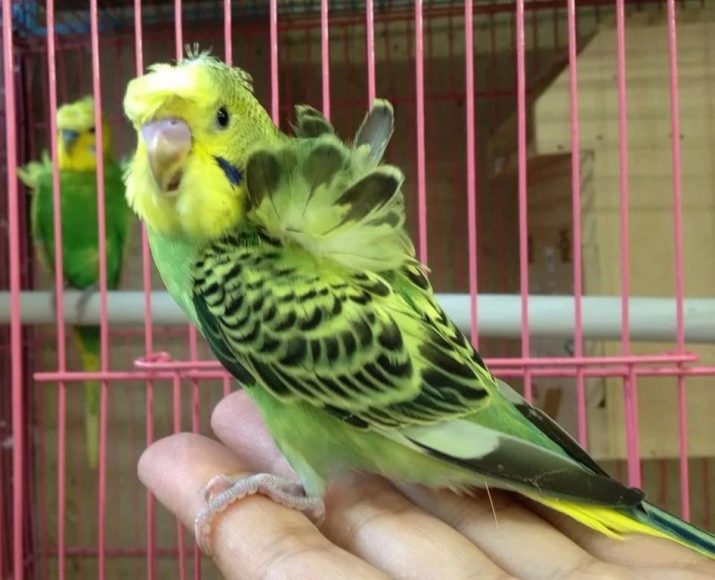
- Saddled distinguished by gray wings and numerical marks of the same color in the saddle region.

- Rainbow colored stand out by a very bright color, with an unusual combination of waves and rich shades.
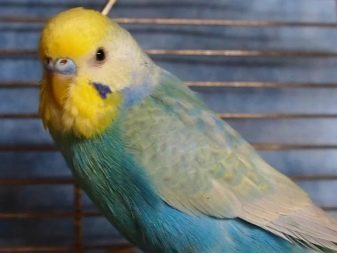
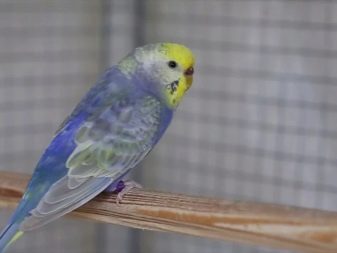
How to choose?
You need to buy 3-4 monthly parrots, they are quickly mastered in new conditions. First, pay attention to the plumage: a healthy bird has clean, shiny feathers, in a patient they are tousled, not very dense. The scales on the paws should be even. If the parrot is inactive, lethargic, it is better not to choose it. It must be remembered that the wavy are very active, curious birds.
Choosing them as pets, you need to be prepared for the fact that they sing loudly, especially in the morning. Also like to scatter scraps of newspapers, droppings, leftover feed, husk. Every day it will be necessary to clean the cage to avoid the appearance of an unpleasant odor. These birds have a very sensitive respiratory system, so you cannot:
- to smoke;
- sprinkle with perfume;
- use air freshener;
- paint your nails;
- Cook food.
When buying, you need to be able to determine the gender of the pet, as girls and boys differ in characters. Males learn to talk faster, they show a greater interest in imitation. In addition, males are more active and not as aggressive as females, which are most often acquired for breeding.
The sex of the parrot can be determined by the wax: in males it is predominantly blue, in some hybrids it is pink, but females have a growth of brownish, beige or blue color. If there is a little patience in reserve, a cheerful and friendly budgerigar will thank you for your care, bringing joy and excitement to the house.
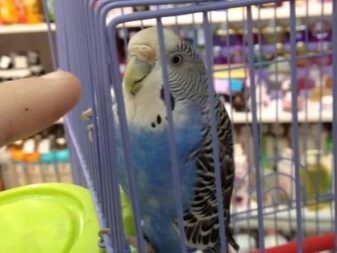
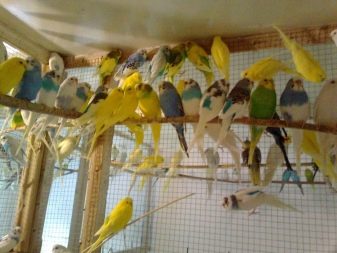
Content Rules
In order for the acquired wavy to feel wonderful in a new place, he needs to create certain conditions. The first thing you need to take care of the cell. It is chosen mainly rectangular, rather voluminous and better made of stainless steel. The bottom in the cage must be with a pallet. At different levels, several wooden beams, rattles, swings are placed.
Must be present: a bath, a drinker, three feeders - one for grain, another for soft feed and a third for vitamin preparations. The dishes are washed every day. The pallet also needs to be cleaned once a day. Once a week they wash the cage and objects in it. It is useful for birds to fly around the apartment, but it is necessary to exclude birds eating indoor flowers, they can be poisoned.
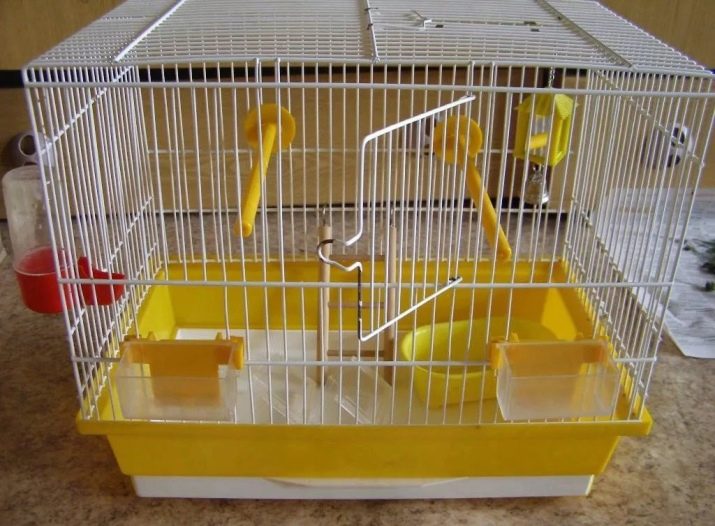
The cage is best placed in a bright room. One part of the cage should be placed close to the wall - there the wavy will arrange for itself a nook. When installing the cage, it is worth remembering that parrots do not tolerate heat and drafts, so these factors should be excluded. In the summer, you can put birds on the balcony for a while, but only until noon. At night, the cell is covered with dark cloth, but so that there is air access.
In summer, you can put a bath of water so that the parrots do not overheat. The optimum temperature for them is + 22–25 degrees. In winter, you need to create additional lighting, similar to solar. Poultry should be fed diversely and in the right ratio of products. To strengthen the body and normal development they provide vitamins, crushed eggshells, chalk.
Mostly they eat mixed cereal feed.. They also eat sesame seeds, flax, oats, and sunflower. In winter, the birds are given germinated wheat and oats.
Wavy people love a variety of fruits and vegetables: carrots, cucumbers, zucchini, beets, apples, peaches, pears. They enjoy strawberries and raspberries with pleasure.
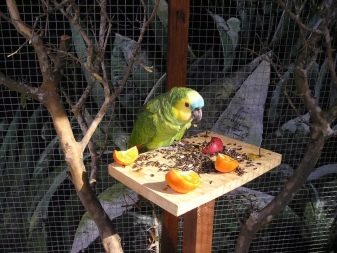
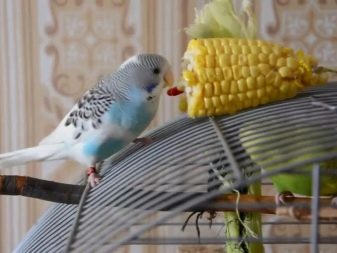

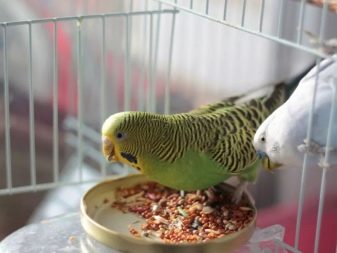
In the summer they can feed the young leaves of plantain, dandelion, clover, but they can not be torn near the road or some industries. It is not allowed to give birds nuts, green onions, as well as persimmons, avocados and mangoes. Once a week, parrots are treated with products containing calcium: cottage cheese or boiled egg. They give food to the wavy twice a day, it is better to give purified and cold water, the main thing is that it should not stagnate in a drinker. From time to time, vitamin preparations are dripped into it.
Twice a year, parrots come to molt. During this period, they become more irritable, do not fly. They need to be left alone, not to be disturbed, and vitamin preparations should be added to the diet. If a female and a male are kept together, you need to know that they become sexually mature in a year and a half. Mating occurs in the summer-autumn period.
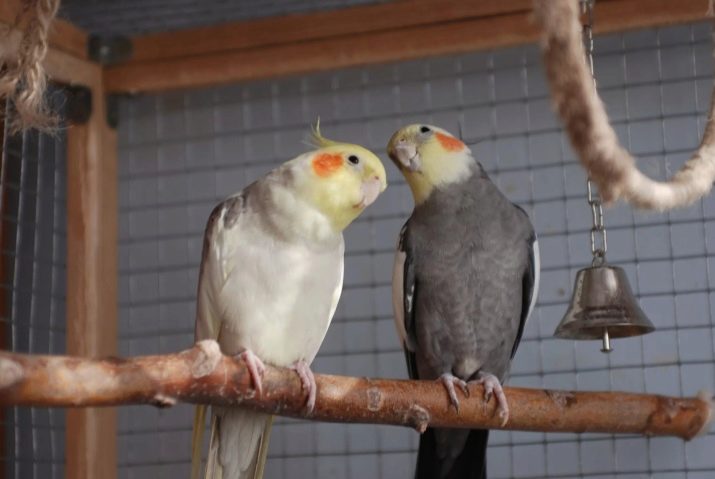
To remove the chicks, a small box with a folding top, a recess for eggs and a bed of wood shavings is placed in a cage.
When small parrots begin to feed on their own, they are put into another cage - the female can bite them.
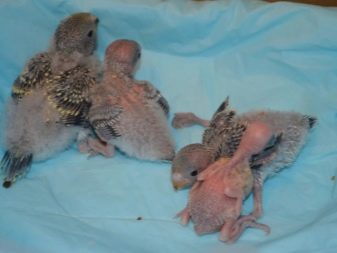
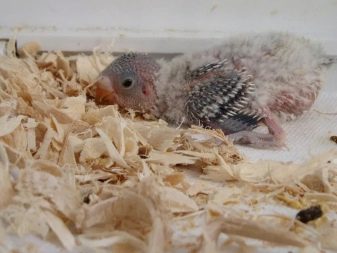
Training
Budgerigars are very smart and learn fast. But first you need to tame the bird, to gain its trust. You can not use force, pick it up against desire. Gradually offer a treat and pay attention - the wavy will get used to it and will seek communication with the owner. After that, you can start training. To achieve a result, classes should be held regularly.
Young individuals are easier to train and learn much faster. It is better to start memorizing words with the name of the bird, it must be pronounced clearly and expressively. The duration of classes should be approximately 10-20 minutes at the same time. Be sure to praise the budgie for the work done and reward a treat. The main thing in this matter is not lazy and adhere to regularity.

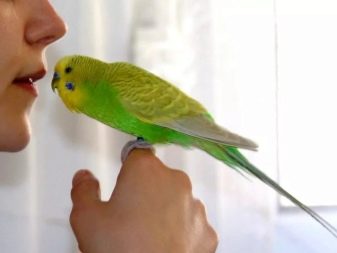
The result will be in about a month of work, but it's worth it. A satisfied pet will demonstrate its success to everyone. Very often, budgerigar owners are faced with such a problem as bites. These birds are very sensitive and in this way can express their emotions: fear, hostility, excitement. You must first understand the reason for this behavior, because the method of solving the problem depends on it.
Aggressive birds become during molting, protecting their possessions, may in this way require attention or play. If such a behavior has become habitual, measures must be taken. To stop a bird from biting, it is necessary after an attempt to remove it with the word "impossible", said clearly, in a strict tone. As a result, after 4–5 times the parrot begins to understand the ban and react to it. You can also try to switch the attention of the wavy, as soon as he makes an attempt to bite. After a while, he himself will forget this habit.
About how to train a budgerigar, see further.
Diseases
Unfortunately, budgies are prone to disease, especially individuals resulting from hybridization. Caution should be lethargic and lethargic appearance of the pet. In a sick bird, feathers are dull, nasal discharge appears, wax color changes, appetite disappears or excessive thirst appears. Often diseases are caused by improper care or the diet of a parrot. Among the most common diseases of budgies are:
- a cold occurs due to hypothermia or a draft and is manifested by cough, nasal discharge, is treated with warming;
- digestive tract disorders or poisoning are manifested by diarrhea, drowsiness, vomiting and are the result of poor-quality food;
- gout occurs in adult birds and the symptoms are small nodules near the joints and swelling, treated under the supervision of a veterinarian (in the absence of treatment, the birds die);
- arthritis and other diseases of the paws more often occur due to excess weight associated with improper nutrition, the treatment is prescribed by an ornithologist.
Budgerigars are often sick due to parasites, mainly ticks and helminths:
- the scabies mite infects the area of the waxen, causing severe itching, is treated with a special composition;
- a tracheal tick develops in the trachea and lungs, provoking asthma attacks, the doctor prescribes therapy;
- the red tick feeds on the blood of the bird (dangerous for humans), depriving it of its strength, is treated with Neostomazan;
- down-eaters eat skin flakes and plumage, birds suffer from overthrow and discomfort, treatment is carried out under the supervision of a doctor;
- helminths provoke diarrhea, lethargy, decreased appetite, may appear due to poor-quality food, the veterinarian prescribes treatment.
Worms and infectious diseases, the symptoms of which are similar to a cold, are sick.
They can be cured only with the help of a doctor who will make the correct diagnosis. But still, they are easier to prevent than to treat. To do this, it is necessary to observe the necessary conditions of detention, adhere to cleanliness, eliminate dampness and excessive heat.
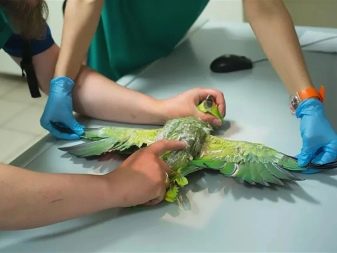
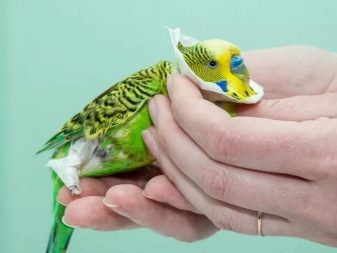
Interesting Facts
There are many interesting facts about budgies:
- they see more colors than humans, because they also distinguish between the ultraviolet spectrum;
- natural color - green, barely noticeable in foliage;
- the fastest birds;
- live on the Australian mainland for more than 5 million years;
- the head rotates 180 degrees;
- the weight of the hatched chick is about 2 grams;
- heart rate - 200 beats per minute.
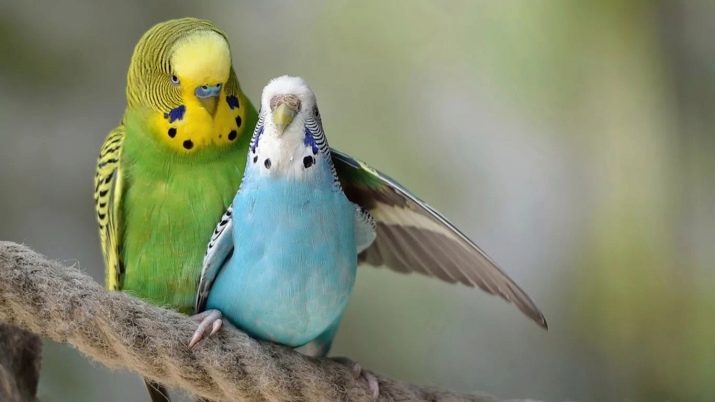
Next, see interesting facts about budgies.
Owner reviews
Those who decided to make budgies as pets, note their sociability, friendliness and cheerful character. They also highlight the need for a balanced diet, since uniform food causes problems with the intestines.
Experienced parrot owners warn of the negative effects of drafts on bird health. All owners of wavy rejoice in their learning abilities and pretty good achievements. Also, many emphasize a sense of rhythm and dancing ability, and there is nothing to talk about singing talent.
